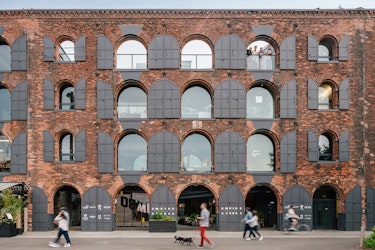Temporary architecture refers to buildings or structures that are designed to be used for a limited period of time, after which they are dismantled. Temporary architecture is often used for events such as festivals, exhibitions, and sports events, but it can also be used for housing, disaster relief, and other purposes. One of the key advantages of temporary architecture is its ability to be reused. In this essay, we will explore how reuse works in temporary architecture.
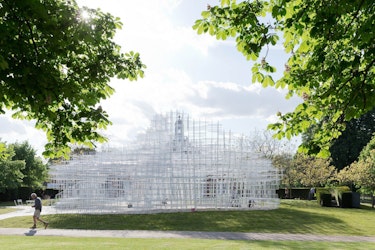
Credit: Serpentine Pavilion
The Benefits of Reuse:
Reusing temporary architecture has several benefits. First, it reduces waste. When temporary structures are taken down, they can be recycled, repurposed, or reused in another location. This reduces the amount of waste that goes to landfills, which is good for the environment.
One of the benefits of reusing temporary architecture is its cost-effectiveness. Temporary structures are often less expensive to construct than permanent structures, and they can be reused multiple times. This means that the initial investment in a temporary structure can be spread out over several uses, making it a more cost-effective solution. Additionally, temporary structures are often quicker and easier to construct than permanent structures, which can further reduce costs.
Another benefit of reusing temporary architecture is its flexibility. Temporary structures can be adapted and modified to suit different uses and locations. For example, a temporary structure that was originally used for a music festival can be repurposed as housing for disaster relief. This flexibility can make temporary architecture a more versatile solution than permanent architecture, which is often designed for a specific use and location.
Reusing temporary architecture is also sustainable. By reusing existing structures instead of building new ones, we reduce the amount of resources required for construction. This is good for the environment and helps to conserve natural resources. Additionally, reusing temporary structures reduces waste, as these structures can be recycled or repurposed instead of being sent to landfills.
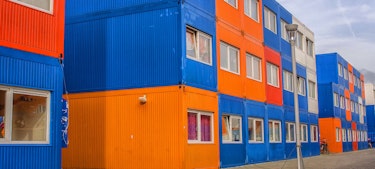
Credit: Archello
However, there are also challenges to reusing temporary architecture. One of these challenges is the cost of transporting and storing the structures. Temporary structures are often large and bulky, and they can be expensive to transport and store. This can make it difficult to reuse them in other locations. To address this challenge, architects and designers can focus on creating structures that are modular and easy to disassemble, which can make them easier to transport and store.
Another challenge is the need for maintenance and repair. Temporary structures are often designed to be used for a limited period of time, and they may not be built to last. This means that they may require frequent maintenance and repair in order to remain functional. To address this challenge, architects and designers can focus on creating structures that are durable and easy to maintain. This can include using materials that are easy to repair or replace, or designing structures that are easy to access for maintenance and repair.
Finally, another challenge is the need for flexibility. Temporary structures are often designed to be used for a specific purpose, and they may not be easily adaptable to other uses. This can make it difficult to reuse them in different contexts. To address this challenge, architects and designers can focus on creating structures that are versatile and adaptable. This can include using modular designs that can be easily reconfigured, or designing structures that can be repurposed for different uses.
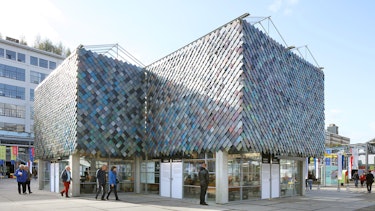
Credit: Dezeen
Examples of Reused Temporary Architecture:
There are many examples of temporary architecture that have been reused. One example is the Serpentine Gallery Pavilion in London. The pavilion is a temporary structure that is erected in the gallery's lawn each year. The pavilion is designed by a different architect each year, and it is used for exhibitions, events, and other purposes. After the pavilion is taken down, it is often reused in other locations or recycled.
Another example of reused temporary architecture is the Shipping Container Village in Johannesburg, South Africa. The village is made up of shipping containers that were converted into housing units. The containers were donated by a shipping company and were originally used to transport goods. The containers were modified to include windows, doors, and other features, and they were stacked to create multi-story buildings. The village provides affordable housing for people who were previously homeless.
A third example of reused temporary architecture is the Expo 2015 pavilions in Milan, Italy. The pavilions were designed for the World Expo, which was held in Milan in 2015. After the expo, the pavilions were repurposed as community centers, schools, and other public buildings. The reuse of the pavilions helped to revitalize the area around the expo site.
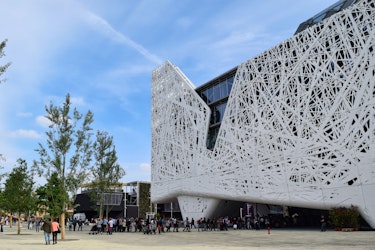
Credit: ArchDaily
In conclusion, reusing temporary architecture has many benefits, including reducing waste, being cost effective, flexible, and sustainable. There are numerous examples of temporary structures that have been successfully reused, such as the Serpentine Gallery Pavilion in London, the Shipping Container Village in Johannesburg, and the Expo 2015 pavilions in Milan. However, there are also challenges to reusing temporary architecture, such as the cost of transportation and storage, the need for maintenance and repair, and the need for flexibility. These challenges can be addressed through careful planning and design, as well as through ongoing maintenance and repair.
As we move towards a more sustainable future, the reuse of temporary architecture will likely become increasingly important. By reusing existing structures instead of building new ones, we can reduce waste, conserve resources, and create more cost-effective and flexible solutions. As such, it is important for architects, designers, and policymakers to continue exploring the possibilities of temporary architecture and finding ways to reuse these structures in innovative and sustainable ways.
